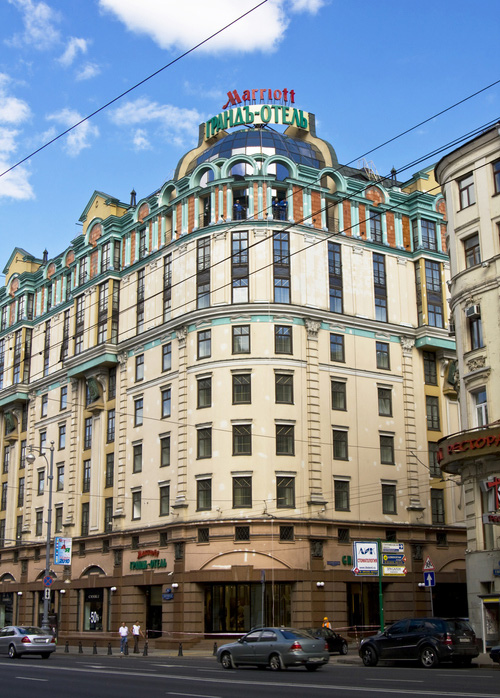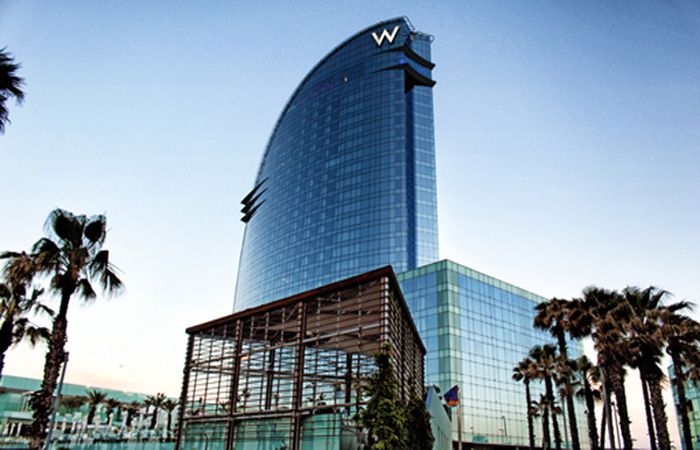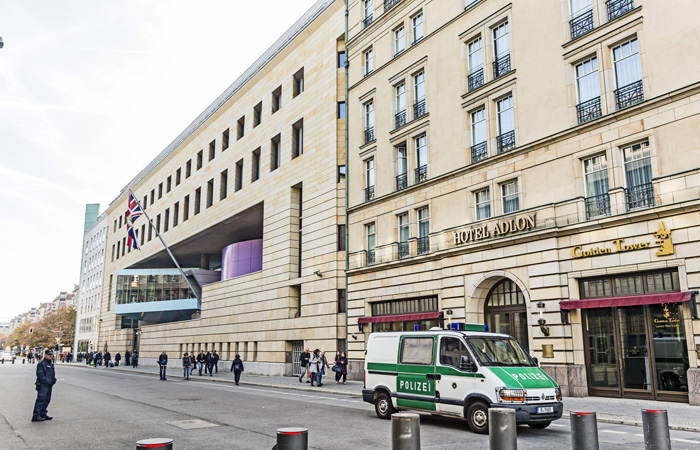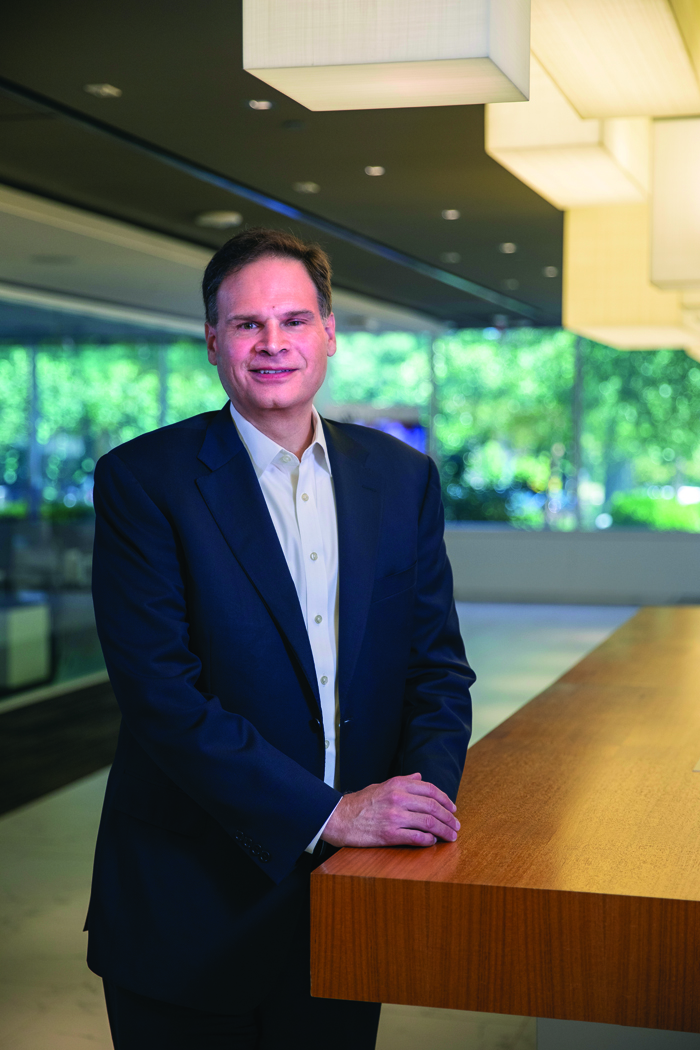At 21 stories, the new headquarters for Marriott International, currently under construction, will be the tallest building in the Washington suburb of Bethesda, Md. The top floor will feature sweeping views of the U.S. Capitol dome and the Washington Monument to the south and, to the northwest, the rolling hills of western Maryland.
At most companies, a prime aerie such as this would be reserved for members of the C-suite. But, in this case, once Marriott moves into the new building (sometime in 2022), the 21st floor will become home to its state-of-the-art employee-learning center.
New: The departure of WeWork’s CEO won’t end its problems
The symbolism matters deeply, says David Rodriguez, the hospitality company’s global chief HR officer and this year’s HR Executive of the Year.
“It underscores our belief that the future success of our business is completely dependent on the extent to which we’re promoting our associates’ wellbeing and that they’re inspired,” he says.
Read more: See the 2019 HR Honor Roll winners
Marriott, which acquired Starwood Hotels for $13 billion in 2016, is the largest hospitality company in the world. More than 700,000 employees in 130 countries and territories wear a Marriott name badge. The company’s 30 hotel brands include St. Regis, Ritz-Carlton, SpringHill Suites and Courtyard by Marriott.

Yet, even more than its sheer size, Marriott–which started in 1927 as an A&W root beer stand operated by founders J. Willard and Alice Marriott–is known for its stellar reputation as a place to work. The company has made Fortune’s “100 Best Companies to Work For” list for a record 22 consecutive years. It’s also routinely featured on other “best places” lists, including “Best Places to Work for Veterans” (Indeed), “Best Companies for Latinas to Work for in the U.S.” (Latina Style) and “Leading Disability Employers” (National Organization on Disability), to name a few.
Beginning with its founders, who hired a company doctor in the 1930s to help look after employees as the business expanded, Marriott has long been known as a standout for prioritizing its workers’ wellbeing. Rodriguez, who joined Marriott in 1998 and has held his current position since 2006, is widely credited not only with maintaining but enhancing that reputation while making the company ever-more welcoming to people from diverse backgrounds.
Rodriguez’s leadership was vital to the success of the Starwood merger, says President and CEO Arne Sorenson.
“[The merger] was the largest influx of associates in company history,” he says. “David … stressed the common characteristics of our cultures rather than obsessing about process differences, which could easily become attributable to culture conflicts.”
A Successful Merger
Tall and affable, Rodriguez joked with passing employees during a photoshoot for this story in the sleek lobby of Marriott’s current headquarters in North Bethesda.
Rodriguez combines the people-centric mindset of an HR leader with a keen understanding of business strategy, says Robert Simons, the Baker Foundation Professor at Harvard Business School.
“People can easily engage with him,” says Simons, who’s known Rodriguez for more than 20 years. “But, on the flip side, he’s also very strategic. He relates just as easily when dealing with the most senior business leaders at Marriott.”
Others note Rodriguez’s easy rapport with company leaders.
“This may sound like a cliché, but David’s partnership with Arne, the board and other business leaders at Marriott is highly distinctive,” says Dean Stamoulis of Russell Reynolds, who’s worked closely with Rodriguez on senior-level succession planning and talent development. “His opinion is constantly sought out and valued.”
Rodriguez’s strategy for successfully integrating the Starwood employees into the larger organization is driven by three principles, he says:
- Leaders must espouse and live core values.
- Core values should be based on fundamental human needs (in order to knit the organization together through common bonds).
- Leaders must empower employees to express core values in a personal way to animate the culture. (This not only further brings people together across generations and geographies, it creates a continuous cultural-renewal dynamic.)
“When we acquired Starwood, most constituencies predicted that, like most large M&A deals, it would immediately have significant cultural issues and would ultimately fail to reach our objectives,” he says. “Well, we defied those odds. The reason is, quite frankly, we didn’t follow the typical prescriptions that are offered.”
The priority was to build a “shared understanding” with the Starwood employees on things about which everyone agreed: opportunity, community and purpose, says Rodriguez.

“We really focused on making sure that everyone understood what this company stands for,” he says. “And it became clear across both companies and even around the world that … there’s a home here for everyone.”
Employees at Starwood’s corporate headquarters got a taste of Marriott’s culture during their first introduction to its senior leaders, says Rodriguez.
“[Chairman] Bill Marriott and Arne went to the offices and spent hours shaking hands with every single employee,” he says. “Someone asked, ‘Don’t they know there’s about to be a huge press conference about the merger?’ But to them, that was the most important event.”
At Marriott, leaders have helped advance a culture that’s unique from most other large corporations, says Rodriguez.
“I started my career as a low-level manager at a big financial-services company,” he says. “For employees at my level, there was this drab cafeteria where the meals weren’t subsidized at all. For mid-level managers, there was a separate cafeteria where the meals were partially subsidized. And, for the top executives, there was a really nice dining room on a top floor with chandeliers, white tablecloths, waiter service and 100% subsidized meals.”
At Marriott, by contrast, Bill Marriott is often seen standing in line holding a tray at the employee cafeteria, encouraging others to go before him, says Rodriguez. “He’ll get his food and then sit down at a table and talk with employees.”
To happen smoothly, the Starwood integration also had to involve getting the 150,000 new employees up to speed on Marriott’s hotel-management systems. The team oversaw an effort to build a digital-learning platform to train employees in more than 100 countries in fewer than 21 weeks.
To save time and to help the employees apply what they learned more quickly to their day-to-day jobs, the team created “micro-learning” courses that include short videos and virtual simulations. The training, which is mobile-friendly, allowed the company to avoid having to hire massive numbers of classroom trainers and pull workers away from their regular jobs to attend training, says Ty Breland, Marriott’s global talent officer.
“There were definitely some bumps in the road and learnings that we had to have,” Breland says. “But it really catapulted us onto another plane as we think about learning, moving forward.”
Nearly three years after the merger was announced, there’s solid evidence that it’s succeeding: Recent surveys reveal that engagement levels of the Starwood employees are on par with Marriott’s.
“The engagement score for Marriott was significantly higher [than that for Starwood employees] at the start,” says Rodriguez. “But when we administered the survey a year later, that gap had been substantially reduced.”
When it comes to the most valuable takeaways from the merger, Rodriguez (whose educational background includes a doctorate in industrial/organizational psychology from New York University) cites two things: Give people a reason to come together that’s based on fundamental human needs, and have your leaders regularly “live and espouse” your culture.
“If you have a bunch of senior leaders sitting in a room together trying to create a culture for the new organization, I think that’s a recipe for immediate failure,” says Rodriguez. “The culture needs to be owned by the employees. Leaders need to do what they’re meant to do, which is to live that culture and give employees clear proof points.”
Taking a Stand
Employees need to be proud of the organization they work for and invested in the wellbeing of their customers, says Rodriguez. It’s a crucial reason he oversaw an initiative at Marriott to train hotel associates to recognize the potential signs of human trafficking, a global concern, with an estimated 40 million women, men and children victims of modern slavery in 2016 alone, according to the Global Slavery Index. Hotels and motels are often used unwittingly by human traffickers as a base of operations.

Marriott shared the training (which was developed in partnership with nonprofit organizations ECPAT-USA and Polaris, which specialize in combating human trafficking) with other employers in the hospitality industry. The company also had it translated into 16 languages and made available to locations in 130 countries. So far this year, more than 500,000 hotel associates have been trained.
“This is about living our purpose,” he says. “And, to the extent that you’re serving a noble purpose in society, you’re appealing to the highest needs of your employees. And you cannot have an effective organization just focusing on human capital–you also have to be concerned with social capital.”
Marriott’s TakeCare program also builds on the relationship between the company and its associates, encouraging them to be invested in their own wellbeing and that of others. TakeCare includes fitness events and challenges, financial-wellness tools, emotional health, career-development training and opportunities for community involvement. More than 15,000 employees around the world have volunteered to serve as TakeCare “ambassadors,” helping to spread the word about the program and build enthusiasm.
“These days, pretty much everyone feels disconnected and dissatisfied with almost every institution surrounding them–with the exception of their employers,” says Rodriguez. “We spend a huge portion of our lives with our employer. That’s why this notion of promoting employee wellbeing is so important–you’re literally partners with your employees’ life partners.”

Unlike most traditional wellness programs, TakeCare is built on taking a holistic approach to help employees feel good about themselves, foster relationships within the company and build a sense of purpose about Marriott’s role in society, he says. It includes the TakeCare Relief Fund, which makes need-based financial grants to Marriott employees around the world who’ve encountered personal hardship or natural disasters. In 2018 alone, the program awarded over $400,000 in grants and provided $1.7 million in donations.
“In the service industry, you’re only as good as the wellbeing of your people,” says Rodriguez.
To that point, last year the American Psychological Association named the company the recipient of its 2018 Organizational Excellence Award for its comprehensive training and development efforts.
Celebrating Different Cultures
Given its status as a global hospitality provider, with properties in 130 countries and territories around the world, “cultural competence” is central to Marriott’s business.
Rodriguez greenlighted the company’s “Culture Days” immersive initiative, which is designed to help employees experience and appreciate different business and social protocols, traditions, trends and cuisines.
The initiative isn’t simply for altruistic reasons–ensuring that employees respect and understand other cultures is a bottom-line issue, as well. Indian weddings, for example (which typically feature large numbers of guests), have become big business for some of Marriott’s properties. More than 3.5 million people from Japan visit the U.S. annually, while Chinese visitors spend an average of $6,900 on visits to the U.S.
With Culture Days, employees learn the proper way to present and accept business cards with guests from certain regions of Asia (with both hands and a bowed head). They learn about major world holidays, such as Ramadan. The training is often based on actual scenarios that’ve taken place at Marriott properties and encompasses more than global cultures–employees are also trained on the various sensitivities affecting military or LGBTQ families, or people from urban and rural areas.
“Could you imagine somebody in the U.S. telling somebody in India or Japan, ‘This is how you behave, this is your core value’?” Rodriguez says. “Businesses do it all the time. I think it should be the opposite. You state, ‘Here’s what we stand for,’ and let employees express that in a way that’s culturally relevant to them. That way, you’ll never have to worry about your culture going stale.”
On the talent-acquisition front, Rodriguez has been a pioneer in using social media. Marriott was among the first hospitality companies to use a chatbot to connect with candidates.
“For some of our roles, we’re competing for the same talent that Amazon and Google are,” he says. “My job is to take our great story and make it available to the public.”
This includes “Master of the Craft,” a series of multimedia events that spotlight the work being done by chefs and mixologists in Marriott’s kitchens and bars.
“We’re one of the largest purveyors of food and beverages,” says Rodriguez. The content highlighted on Master of the Craft and in a series called #DiaryOfTheCraft showcases the company to top talent in the field.
The series has garnered more than 2 million video-content views and over 14 million social impressions.
Rodriguez’s reputation resonates well beyond Marriott. He serves as vice chair of the HR Policy Association, where he’s worked closely with CEO Emeritus Jeffrey McGuiness.
“I’ve always been struck by David’s innovation,” says McGuiness, citing Rodriguez’s willingness to embrace social media for recruiting before many other HR leaders were willing to. “Anytime I’ve had an unusual idea or a different take or approach on something, I’d always seek out David because he’s always open to some new angle, perspective or approach.”
One of the most important things other HR leaders can learn from Rodriguez is to not allow yourself to be boxed in by conventional thinking, says McGuiness.
“Don’t let people in your organization or consultants tell you that there’s only one certain course of action for a particular situation. … David looks at everything from a fresh angle and is always willing to step outside the lane to try and improve the HR profession,” he says.

Rodriguez will be featured in a 25-hour course that Simons is putting together for Harvard Business School Online on strategy execution, which will will include interviews with prominent business leaders.
“I couldn’t think of anyone better than David,” he says. Simons spent three hours interviewing Rodriguez about “what it means to be a leader in a global, fast-moving business.” Portions of the interview will be interspersed into the online course, which is aimed at mid-level managers seeking to move up in their careers–a perfect match for Rodriguez, he says.
“What strikes me about David,” Simons says, “is that he’s always thinking of others and how he can help them grow.”
Send questions or comments about this story to [email protected].



